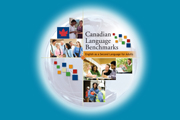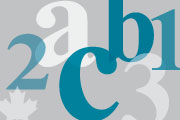
Tips and Suggestions for Instructors: Using the Language for Success Learning Activities
The following outlines suggested approaches aimed at helping instructors use the Language for Success toolkit.
The Language for Success Toolkit can be used as an opportunity for integrating an active learning approach. For instance, role-plays, case studies, digital device use, reflection and self-assessment are valuable tools for learners to gain practical experience.
When starting to use any of the learning activities found in the Language for Success toolkit, introduce the activity by creating a discussion with learners to generate preexisting knowledge on the topic. Depending on the dynamics of the learners, the discussion could be partnered, a small group, or the entire class. Organize questions to progressively narrow in on a specific topic. If applicable, analyze situational similarities and differences depending on the home country of the learners.
For example, in the Adaptability learning activity for CLB Stage 1, begin by asking learners what comes to mind when they hear the word “complaining”. Create a visual (mind map) when eliciting responses from learners. From here, continue the discussion and ask about things such as: the ethics of complaining, why people complain, situations where complaints are common occurrences in learners’ home countries, etc. While gathering responses, inquire about the roles of complainer and receiver in different contexts, the reasons people complain in the workplace, and ways to approach different workplace complaints.
Create a vocabulary bank for learners to record new vocabulary identified in or by the learning activity. Learners can expand the vocabulary by connecting additional words or phrases to the identified words.
For example, in the Collaboration learning activity for CLB Stage 2, there is mention of a menu item being removed because of an allergy. Learners can write down the word allergy and generate additional vocabulary associated with this word (allergic, allergen, allergenic, allergic reaction, hypoallergenic, etc.). Another example in Adaptability – CLB Stage 3, learners can take the words presented connected to adaptability and identify words or phrases associated with adaptability to increase their vocabulary bank.
Have learners expand on the concepts taught in the learning activities to implement the ideas into other workplace scenarios.
For example, in the Creativity and Innovation learning activity for CLB Stage 1, learners can take the concept of suggestions to improve safety in the workplace and create additional workplace scenarios where creativity and innovation could be used. Learners could brainstorm how to rethink a current marketing approach, or suggestions for improving employee morale in the workplace. Another example in the Problem Solving learning activity for CLB Stage 2, it suggests to understand company policies and apply the policies to particular situations. Learners can explore other common policies found in the workplace such as: Code of Conduct, Health and Safety or Absence Policies and apply the information in the policy to practical examples.
Extend learning activities by reviewing additional situations where the lesson topic can be stretched out. Lengthen the topic by expanding the learning activity focus into other skills.
For instance, in the Reading learning activity for CLB 4 SFS Level 1, you can expand the activity topic from reading the instructions for fire evacuation to writing, listening to, or verbalizing fire evacuation instructions. Another example to extend the activity topic into other skills could be in the Communication learning activity for Speaking CLB 9 SFS Advanced where you could have students write emails expressing concerns or listen to concerns during a staff meeting.
Grammar focus can vary depending on the concept of the learning activity. Instructors can pull out a variety of practical examples of grammar from learning activities. Grammar can be taught at any point when using the Language for Success toolkit in the classroom.
Some examples of grammar topics to teach could be:
- In Creativity and Innovation – CLB Stage 1, you could teach the imperative to give warnings.
- In Digital – CLB Stage 1, you could teach modals of advice for writing emails and making suggestions.
- In Collaboration – CLB Stage 3, you could teach formal language for giving opinions and more advanced grammatical structures like adjective, adverb and noun clauses.
- In Listening – CLB 3 SFS Entry and Numeracy – LFS Learning Activity – CLB Stage 1, you can teach a variety of prepositions and prepositional phrases for directions as well as transition words for logical organization of steps.
In many of the Language for Success toolkit learning activities, there is a component on specific formats that will need to be taught to the learners. The formats included are note-taking/outlines, email, text, memo, summary writing, policy, and presentations. When teaching these formats, give learners a variety of workplace scenarios to practice perfecting their Canadian workplace communication style.
For example, in Writing – CLB 6 SFS Level 2, learners are to email a client about project delays. Some topics to expand on this include email clients to explain that a requested product is not available, email clients to reschedule a planned meeting, or email clients to explain additional charges from an original quote. In the Problem Solving – CLB Stage 3 learning activity, learners can look at different communication topics that could be sent in a memo format in the workplace, and then write emails to a staff member or all staff outlining the memo details.
In a classroom setting, instructors can project the learning activity for learners and complete activities synchronously as a group. Learners may also benefit from completing learning activities in partners or small groups. If projection equipment is unavailable, instructors can have students view the learning activities on their personal devices or at home. It is vital for instructors to take up answers with learners to ensure full understanding of the activity. If required, instructors can repeat or expand a topic to help learners absorb the learning activity. Drawing answers from a variety of learner perspectives can help learners have a deeper understanding of the concepts taught in the learning activities.
In a virtual classroom setting, instructors can use the learning activities with their learners in real time. Instructors can take a blended approach and have learners asynchronously complete some of the toolkit activities at home, and then compare responses synchronously during class time.
For example, in Creativity and Innovation – CLB Stage 2, learners can asynchronously listen to the voicemail and take notes about the suggestions. Then they can write an email responding to the voicemail. Students would need to save the email (screenshot or write it on paper). Once in class, students can share their emails and give feedback to each other in partners or small groups.
Use the final summary slide in the learning activities to recap what was taught in the lesson and consider expanding the concept into other suggested scenarios mentioned on the last slide of the learning activity.
For example, in the Digital learning activity for CLB Stage 2, the last slide suggests “differentiate between information and misinformation”. Learners can think about many of the different types of scams found in the “Little Black Book of Scams” (linked in the learning resource on the second last slide) and how they would be able to differentiate between the information and misinformation found in these scams.
Extension Ideas for the LFS Learning Activities
These are some extension ideas to go along with the LFS Learning Activities. Select one or more of the following activities that best suit your learners’ needs and adapt where needed.
Presenting staff concerns to management – CLB 9 / SFS Advanced
Theme/Topic: Workplace communications – Workplace meetings – Public speaking – Resolving conflict at the workplace – Brainstorming & problem solving at the workplace
Pre-listening SB vocab (flabbergasted, absurd, cornerstone, impede, hybrid, costs an arm and a leg) Post-listening applied question:
- Do you agree that the company should reassign the speaker’s roles to someone else and lay off the staff?
- Do you agree that companies should involve the staff in problem solving and decision making when restructuring?
- How do you feel about the suggestions Mizuki made? How about Eduardo’s suggestions?
- What additional recommendations can you add to solve this issue and prevent re-structuring?
Pre-speaking SB: Activities on how to advocate for others in a sensitive and tactful way. As well as how to prepare notes for a public speech.
Reading: Read and comprehend an official memo written by HR (adapted from A Sample Layoff Letter Due To Restructuring (Template) | Careerminds) on restructuring the organization and its implications on staff (possibly including a process flow chart on the restructuring plan and delegation of duties) and take note of the points to be used in a counter argument email in order to advocate for the laid-off staff.
Writing: Write an email to HR, summarize the points mentioned in the memo, advocate for the staff and propose alternative solutions.
Similar task ideas: A coworker has been declined a permanent contract after the probationary period, a promotion, or a requested work accommodation and you want to advocate for him/her to be given the chance.
Following directions within a building – CLB 3 / SFS Entry
Theme/Topic: At the workplace – Giving/Getting directions
Pre-listening discussion topics:
- How do you get directions to a new place?
- What are some words and phrases you use when you give directions?
Writing: Look at the floor plan in the activity and write directions on how to get from one point to another (as instructed by your instructor), such as from Rm. 214 to the staircase or from Rm. 207 to the washrooms.
Speaking: Using a simple drawing of the school floor plan provided by the instructor, the learners are asked to give directions to different points on the floor plan (bathrooms, classroom 3, secretary office…). Additionally, using a map of the city, the learners are asked to practice giving directions to nearby places in their neighbourhood (nearby grocery store, bus stop, pharmacy…).
Similar task ideas: Learners give and follow directions on how to create an account with an online store, to make a salad recipe, or to change the colour/size/font of a document on the computer.
Following fire evacuation rules – CLB 4 / SFS Level 1
Theme/Topic: Workplace safety – Following directions at work
Pre-reading discussion topics:
- What is an emergency?
- How do you think managers should prepare their staff for an emergency?
SB Vocab (fire extinguisher, assembly point, emergency call, first aid, fire alarm, fire exit, activate, evacuate, assist, via, proceed, designated, clear of, fire apparatus, re-enter, All-Clear)
Speaking: This is a roleplay and learners do it in pairs. In the pair, one student is a new worker who is not familiar with fire safety measures at work and the other student wants to teach him/her on the organization’s fire safety plan. After reading the Fire Safety plan, student 1 teaches student 2 what he/she should/shouldn’t do “if they discover a fire”. Then, the learners switch roles and student 2 teaches student 1 what he/she should/shouldn’t do “if they hear an alarm”.
Listening: Learners watch the first 3 minutes of this video on Fire Safety and answer a set of comprehension questions. This is followed by an applied question where learners reflect on what method of extinguishing fire they believe is the most challenging and why.
Writing: Learners listen to parts of the first 3 minutes of the Fire Safety video and make a checklist on the key points they learned in the video. For additional challenge, they are asked to write a short paragraph summarizing the key points they heard in the video.
Similar task ideas: Learners follow simple first aid instructions, photocopy/printing instructions, or COVID screening instructions.
Emailing a client about project delays – CLB 6 / SFS Level 2
Theme/Topic: At the workplace – Shopping – Customer service – Business Communications – Receiving and Responding to complaints
Pre-writing discussion topic:
- When a customer is unhappy with a product or service, how do you think the customer service representative should respond to the customer’s dissatisfaction?
Reading: Read the return policy of a store (adapted from Home Depot’s return policy) and answer a set of comprehension questions. This is followed by an applied question asking the learners to compare the return policy for different products and discuss why the policy is different for different types of products.
Listening: Learners listen to either How to Deal With Customer Complaints or When Customers Complain and answer a set of comprehension questions. This is followed up with an applied question asking the learners to share stories from their personal experiences on how they have witnessed that these steps have been followed (or not followed) when making a complaint to a customer service representative.
Speaking: The instructor provides different scenarios where a customer is unhappy with a service or a product (e.g., TV: arrived late – low sound quality – poor wall installation manual; Winter jacket: smaller than website measurements – not warm enough for long outdoor hours – zipper gets stuck; Window cleaners: arrived late – smoked cigarettes – left dirty rags behind; Cat food: wrong product sent – expiry date too close – charged tax twice). In pairs, learners role play being a customer and a customer service representative where student 1 (customer) makes a product/service complaint based on the scenario and student 2 (customer service representative) responds appropriately by following the steps learned in the listening task.
Similar task ideas: Emailing a supervisor about delay in an assigned work project, to a teammate about an incomplete project due to your delay, to a tenant not receiving a requested repair.
Staying positive with an unhappy customer – CLB Stage 1
Theme/Topic: Workplace Communications – Customer Service
Listening: Learners listen to this video on Telephone Complaints and answer a set of comprehension questions about what specific things Jesse is complaining about, and what she expects to happen. The learners listen for the second time and write down notes on how Tim demonstrates positive attitude by providing examples from the conversation and explaining why these examples demonstrate positive attitude.
Writing: The learners pretend they are Tim in the conversation they just listened to. The learners are instructed to write an email to Jesse explaining what the company is going to do to address her complaints. The learners need to demonstrate a positive attitude in their email.
Reading: Adapted from the Indeed article How to Respond to Customer Complaints, learners read and learn about how to respond to customers’ complaints in 5 steps* (1. Listen to the complaint, 2. Apologize to the customer, 3. Ask questions, 4. Formulate a solution, 5. Thank the customer) and answer a set of comprehension questions.
Speaking: With scenarios provided by the instructor (e.g. products not matching expectations, support inadequate or unavailable, delay and mistakes in delivery…), learners role play in pairs where one is a complaining customer and the other is a customer service representative responding to the complaint following the 5 steps learned in the reading task*. The learners switch roles afterwards.
Similar task ideas: Learners demonstrate adaptability and positive attitude when dealing with a slacking teammate, a demanding manager, or a coworker with attitude issues.
Adjusting to a new situation – CLB Stage 3
Theme/Topic: Workplace Communications – Workplace Meetings
Pre-listening discussion topics:
- As a new employee, what areas do you think you need to adapt to in order to be successful at a Canadian workplace?
- Do you think as a new employee you need to demonstrate resilience? Why do you think that way?
- How are resilience and adaptability related? Can you demonstrate their relationship by using a personal example?
Writing: You are Jim, the manager of the company where Maria and Ali work. After the presentation by Maria and Ali, staff have voiced their concern to you about the new “no-personal-heaters” safety rule as they often feel cold at work, particularly the front desk staff who are exposed to gusts of cold wind as the main entrance door opens/closes frequently.
Write a memo to the staff and address this concern. In your response, acknowledge the concerns and offer alternative solutions and strategies to keep warm while keeping the workplace safe for everyone. In your memo, demonstrate the elements of adaptability (adjust/improve, learn, focus, persist, stay positive, manage stress)
Speaking: The instructor distributes different scenarios to small groups of learners within the class. Each scenario describes an unexpected change at a proceeding at the workplace (e.g., a teammate who had an important role in your project has resigned, the product you had ordered for the completion of a project is back-ordered, a front-desk staff has called in sick and there is no one to respond to walk-in clients, the new data-management system is glitching and the updated version will not be available for another week…). Learners are asked to participate in a role-play where they come up with alternatives and solutions within their team for the situation described in the scenario. They will need to demonstrate elements of adaptability when discussing solutions within their group (adjust/improve, learn, focus, persist, stay positive, manage stress).
Reading: Learners read a passage on Adaptability at the Workplace (adapted from Learn and Grow: What is adaptability in the workplace? | It’s Your Yale) and answer a set of comprehension questions. This is followed by an applied question on which “strategies to champion change” they have been able to implement successfully so far, and which ones they need to practice more on.
Similar task ideas: Learners reflect on and demonstrate adaptability adjusting to a new role at work, a shift of schedule from regular to evening/weekend, or relocation to a different site as per project needs.
Sharing meeting notes with a co-worker – CLB Stage 2
Theme/Topic: Meetings at the workplace – Taking minutes – Collaborating with coworkers
Pre-reading discussion topics:
- What are some of the things you can do to be more cooperative at work?
- What do you think managers can do to create a more collaborative work environment?
SB vocab (recognition, promote, line cook, pulled chicken, action item, soak, flatware, cookware, load, expecting [a baby])
Writing: Write an email to your new coworker Ali. In your email, refer to the “news” that was mentioned in the minutes and offer help to Ali in applying for a server job, if he wants to. Also, Ali is new to the team and not familiar with the scheduling app. Offer to teach him how to use the app. As well, ask him if he would like to participate in the team building activity and plan to participate together if he is interested.
Listening: Learners listen to a manager providing updates at a staff meeting and fill out two columns with more important and less important points. This is followed up by an applied question asking the learners why they consider selected points non-important.
Speaking: Learners role play in pairs, one being a new staff member and another one a more experienced coworker. The experienced coworker gives an overview of the important updates from the staff meeting to the new coworker. Additionally, he/she offers to assist the new coworker with some action items or training.
Similar task ideas: Learners reflect on and demonstrate collaboration in training a coworker on a new work software, or on routines for calling in sick and requesting time off.
Creating an office memo from a team meeting – CLB Stage 3
Theme/Topic: Workplace communications
Pre-listening discussion topics:
- What’s a memorandum of understanding (MOU)? What is the purpose of it?
- How can parties establish a successful MOU?
SB vocab (memorandum of understanding, not to kill the mood, for starters, milestone, ergonomics)
Reading: Read the MOU written by Alex and answer a set of comprehension questions. This is followed up by some applied questions asking the learners:
- *what challenges do you foresee in the application of this policy?
- *what questions do you think employees might have about this policy?
Speaking: In pairs, student role play where one is in a supervisory role and the other one is a staff member. The supervisor summarizes the main points of the Work from Home policy and explains them to the staff member. The staff member, on the other hand, asks specific questions about different parts of the policy, using the applied questions previously written in the Reading task*.
Similar task ideas: Learners reflect on and demonstrate collaboration when collecting ideas on a new overtime, lieu time, or change-of-schedule policies for work.
Making the entrance at work safer – CLB Stage 1
Theme/Topic: Workplace safety – Emergency
Pre-reading discussion topics:
- What are some typical hazards that might happen at a workplace?
- How does your company make things safer for you?
- How do you make things safer at home for others?
SB vocab (slippery, slip, grip strip, warn)
Reading: Read a scenario about Eddie who slipped and fell on the ice in the parking lot of his workplace and answer a set of comprehension questions.
Speaking: In small groups, discuss what the employer should do to stop accidents like this, and what the employees should do to protect themselves from accidents like this.
Writing: You are Eddie. Write an email to your manager and explain what happened to you on the day you fell on the ice. Suggest 2 or 3 different ways that your manager can make the parking lot safer in the winter.
Listening: Listen to Eddie’s manager giving safety tips and instructions to the employees on how to be safe in the parking lot during icy season. Make note of the important instructions and points that the manager mentions.
Similar task ideas: Learners demonstrate creativity by offering strategies to make work-from-home more productive or coming up with solutions to a shortage of office space for all the staff.
Creating a store window display with a co-worker – CLB Stage 2
Theme/Topic: Workplace communication – Teamwork – Problem-solving – Giving/receiving feedback
Pre-listening discussion topics:
- Do you prefer working individually or as a part of a team? Why? What does teamwork mean to you?
- What does teamwork look like in a Canadian workplace?
Post-listening: Follow up by comprehension questions targeting the speaker’s intent, tone, specific info and implied meanings. Continue with a group discussion on what the learners liked about the way the speaker provides feedback and why.
Reading: Learners read a passage containing important tips on providing constructive feedback (containing concepts such as “balance praise with areas of improvement, make sure it’s a two-way conversation, and provide next steps and expectations, with examples) and answer a set up comprehension questions. This is followed by a discussion on which of the tips they found most interesting and why.
Speaking: Learners are provided with mini scenarios of a teammates project where there are good achievements as well as areas for improvement (such as a teammate’s preparations for the manager’s retirement party, a teammate’s PowerPoint presentation for the Health & Safety training, or a teammate’s proposal for cost cutting measures) . Learners are instructed to role play in pairs and provide constructive feedback to one another and respond appropriately to the feedback received.
Similar task ideas: Learners reflect on and propose new ways of doing office work to increase the level of physical activity at work, or propose new ideas for making the workforce at the organization more diverse and inclusive.
Texting and emailing at work – CLB Stage 2
Theme/Topic: Fraud and Scams – Cyber Security – Identity theft – hacking and phishing
Pre-reading discussion topic:
- Have you ever taken any cyber security training?
- Do you think doing cyber security training should be mandatory at the workplace? Why do you think that way?
SB vocab (spam, suspicious, threat, ensure, scammer, on the lookout, to commit, fraud, upside down, fraudster, unsophisticated, elaborate, hacking, phishing, maiden name, reputable, closed padlock symbol, shield, hand over, lose sight, shred)
Speaking: In small groups, exchange personal stories on 1) what area of cyber security they find the most challenging to you and 2) what methods they personally use to protect themselves against scammers.
Writing: After reading the Subscription Trap, write an email to your friend telling him/her how to protect themselves against this trap. Use “paragraph” format (not bullet point).
Listening task: Learners listen to sections of The Little Black Book of Scams 2nd edition (turned to audio format by AI by the instructor/developer) and summarize the key points, followed by a group discussion on the findings.
Similar task ideas: Learners listen to or read about similarities and differences between Google Docs and Microsoft Wordl, or Zoom and MS Teams, and decide which one to use for work or school.
Giving directions to a co-worker – CLB Stage 1
Theme/Topic: At home and in the community – Comprehending directions – Following measuring instructions – Comprehending dimensions
Pre-listening discussion:
- Do you use meters or feet for dimensions?
- Do you use kilograms or pounds for weight?
SB Vocab (straight, left, right, turn, client, break down, get off, let me get this straight, further, instead)
Speaking: In pairs, tell your partner how to go from your classroom to the washrooms, to the kitchen, to the entrance door, and to the secretary’s office. Use measurements (e.g. 100 meters or 200 meters) and directions (e.g., turn left/right)
Writing: You have a new co-worker and she/he doesn’t know the area around the office. Write directions for her/him and describe how to get from work to the bus stop, to the grocery store, to the bank, and to the pharmacy. Use measurements (e.g. 100 meters or 200 meters) and directions (e.g., turn left/right)
Similar task ideas: Learners plan for and write a list of activities and refreshments for an office Christmas party, including the list of items to purchase and the total budget needed. Alternatively, learners read or listen to measurements of an office desk and find the right one from a list of images given by calculating the measurements as well as other descriptions.
Making a decision based on a policy – CLB Stage 2
Theme/Topic: Workplace policies – School policies
Pre-reading discussion topics:
- What is inclement weather?
- What do you think employees should do in case of inclement weather?
SB: Vocabulary practice for CLB 8 (policy jargon): (inclement weather, regardless of, unless otherwise, alternate, forthwith, commence, collective agreement, discretion, remuneration, prorated, thereof, personal leave of absence, provision, set out, designate)
Post Reading questions:
- Which part of this policy do you find too complicated to follow? Please explain your reasons.
- How do you think this policy can be improved to be more fair to the employees? Explain your reasons.
Speaking: In pairs learners role-play being founding partners of a new gym. In the role play, the two partners are brainstorming on what to be included in the gym’s new inclement weather policy in order to make it comprehensive.
Writing: A new coworker has asked you about the remuneration policy in case of absence due to inclement weather. Write an email to the coworker and summarize the key policy points of this section of the policy. Use appropriate tone and style for an email.
Listening: Listen to two supervisors discuss a recent scenario of inclement weather involving staff absenteeism and reporting to an alternate location; decide where the supervisors and the staff followed the inclement weather policy correctly and where they failed to do so.
Similar task ideas: Learners find solutions for observed staff shortage issues around Winter holidays and March break and propose changes to the organization’s Vacation Policy. Additionally, learners find solutions for issues with proper use of computers at work and propose an Employee Computer Usage policy for their workplace.
Accommodating an employee – CLB Stage 3
Theme/Topic: Workplace policies – Workplace accommodation – AODA training, Ontario Human Rights Commission, Accessible Canada Act
Pre-reading discussion topics:
- What are some workplace accommodations you are familiar with?
- What do you know about workplace accommodation in Canada?
SB: Vocabulary practice (accommodation request, proactively, recourse, informed decision)
Post Reading questions:
- Which part of the Duty to Accommodate protocol for Managers do you think might be the most challenging for the managers?
- Why do you think that way?
Speaking: In pairs or small groups, think about your field of work: what accommodations do you think someone in your line of work might ask for? How do you think a manager can facilitate the said accommodation requests?
Listening: Listen to Duty to Accommodate for Employers and summarize the key points in bullet points.
Similar task ideas: Learners read different segments of WHMIS Training and decide how to make their workplace WHMIS-compliant for workers, employers, manufacturers and suppliers.









